Updated 2024
Have you ever seen a fantasy makeup photo shoot where the model had a smoothly scaled forehead instead of eyebrows? Or just about every movie where an actor’s brows look different from their own? Dedicated actors might cut off their hair, but not often their eyebrows! So where do their brows go?
So where do their brows go?
The secret is makeup, of course! But simply using makeup won’t work. Your brows would still show through, except with an uneven layer of flesh-toned product. Foundation alone won’t get you the smooth, disappeared look you had in mind. Makeup artists need to use a technique called brow blocking.
Brow blocking is a makeup technique where the natural eyebrows are covered or blocked out using various methods to create a clean and smooth surface. This technique is commonly used in theatrical, drag, and special effects makeup to alter the appearance of the eyebrows.
The process usually involves gluing down the brow hairs with an adhesive or using wax or gelatin to cover and smooth them out before applying makeup over top. The result is a blank canvas that allows for more creative freedom when drawing on new eyebrows or creating other facial features.
While brow blocking can be time-consuming and requires some skill, it is an essential technique for many makeup specializations and has been used for decades to transform appearances. So, it is a valuable skill for makeup artists to have in their repertoire.
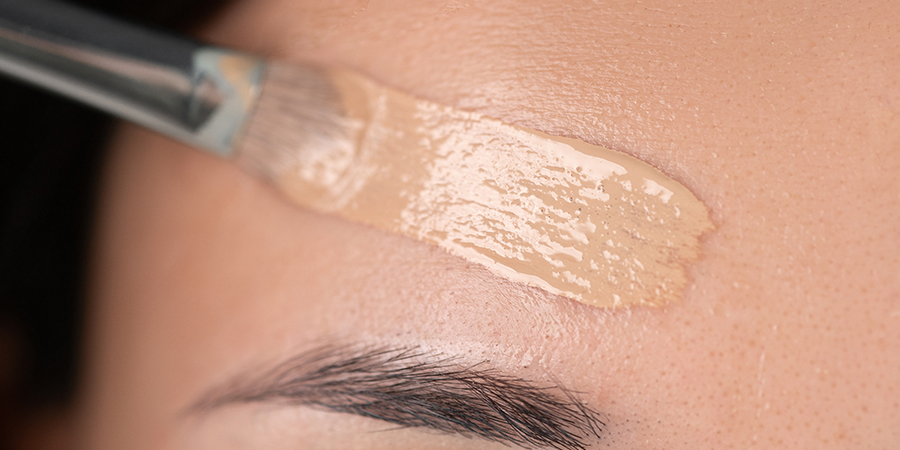
When to Use Brow Blocking
Brow blocking is a useful skill for any makeup artist. But it’s indispensable for Theatrical makeup artists, drag makeup artists, and special effects makeup artists. It enhances features, making them more visible from a distance, and allows for complete transformations, supporting bold and expressive styles. This versatile method is also valuable for defining facial features through contouring and highlighting.
Brow blocking is useful for:
- Creating looks with no eyebrows at all
- Redrawing the eyebrows in a different shape or color than the natural brows
- Changing the position or placement of the brows to influence the appearance of the eyes
Would the evil villain in the superhero movie look more menacing with thin, fiery red eyebrows arching as high as his hairline? Would the rag doll in the musical look more doll-like if you raised her brows higher to enlarge her eyes? Does the serious TV drama you’re working on call for a chemotherapy patient makeover? You’ll likely encounter brow-blocking work in your career—whether it’s for theater, cosplay, or special FX gigs!
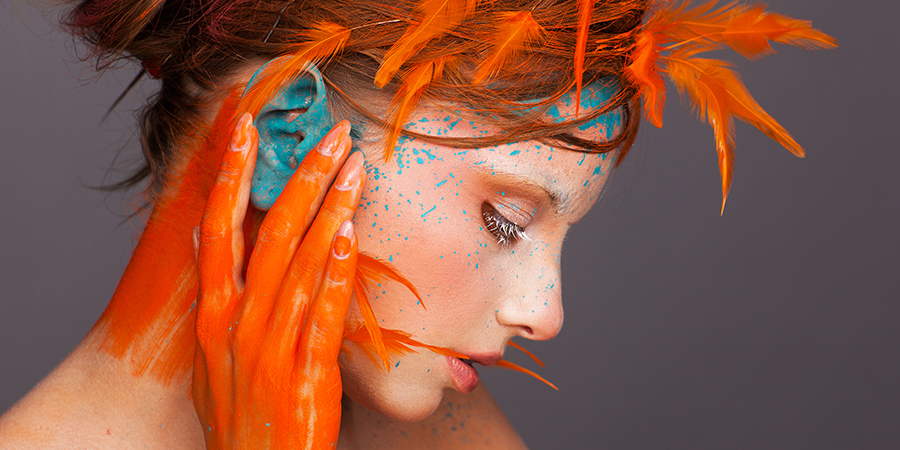
Essential Tools for Brow Blocking
It takes more than a bit of foundation to properly cover eyebrows—particularly dark, thick ones! Here’s what you’ll need:
- Glue (we’ll get into more detail about the kind of glue you’ll need in a moment!)
- A palette knife
- Translucent powder
- Face powder in your client’s skin tone (or slightly lighter)
- Cream concealer in your client’s skin tone (or slightly lighter)
- Foundation in your client’s skin tone (an accurate color match)
- A small to medium sized fluffy brush
- A blending sponge
- A spoolie
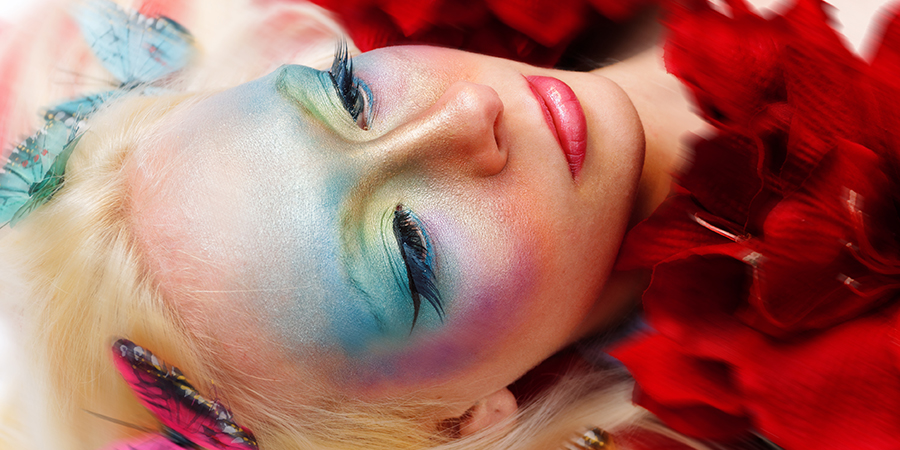
Guide to Eyebrow Concealing Glues
Believe it or not, most brow blocking is done with a regular Elmer’s glue stick! Try not to buy the poor quality discount brands that stay sticky and have a grainy texture. You want the glue to go on smoothly and dry well. The best glue sticks for brow blocking are purple because they dry clear.
On professional movie sets where an actor might be under very hot lights for hours at a time, you’ll need something stronger than school glue. Instead, professionals might use medical-grade adhesives like Pros-aide or liquid latex. These block the eyebrows better than school glue, but they must be taken off with an adhesive remover. If you pull Pros-aide or liquid latex (which dries into flexible plastic) off once they’ve dried, you’ll pull your client’s eyebrows right out! Stick to a glue stick while you’re still learning to avoid some scary mishaps.
Brow blocking, Step by Step
Try out this brow blocking technique using your handy stick of school glue!
- Use your spoolie to back-brush the brows so the hairs stand up and separate.
- Apply glue liberally against the growth pattern of the eyebrows until you see the purple color! Avoid the skin around the brows for smooth makeup application later on.
- Before the glue dries, use your spoolie to comb through the brows. Comb against the grain of the hairs and upwards to work the glue between the hairs.
- Apply more glue and then comb the hairs down smooth along their natural growth direction.
- Apply another layer of glue over the entire surface of the brow, following the direction of hair growth to seal the hairs in place.
- Let the glue dry.
- For the final layer, use your palette knife to apply more glue and smooth it over the surface of the entire brow, following the grain of the hair. Minimize the textures of the hairs as best you can.
- After the glue dies, set the glue with translucent powder.
- Cover the eyebrow with concealer and carefully blend it with your sponge.
- Set the concealer with powder in the same flesh-toned shade.
- Repeat the concealer and powder layers until you can’t see the natural brow color.
- Blend the edges around the brows. Don’t be too harsh or so vigorous that you move the layers of makeup underneath.
- Apply foundation over the entire face, covering and blending the brow area.
- Continue with the rest of the look!
Brow blocking takes practice! When it’s done very well, neither the color of the brows nor the texture of the hairs will be noticeable. If it doesn’t matter how smooth the brows are, you disguise it during the rest of your application. But if you’re working with HD cameras on set, keep practicing to cover eyebrows as smoothly as possible!
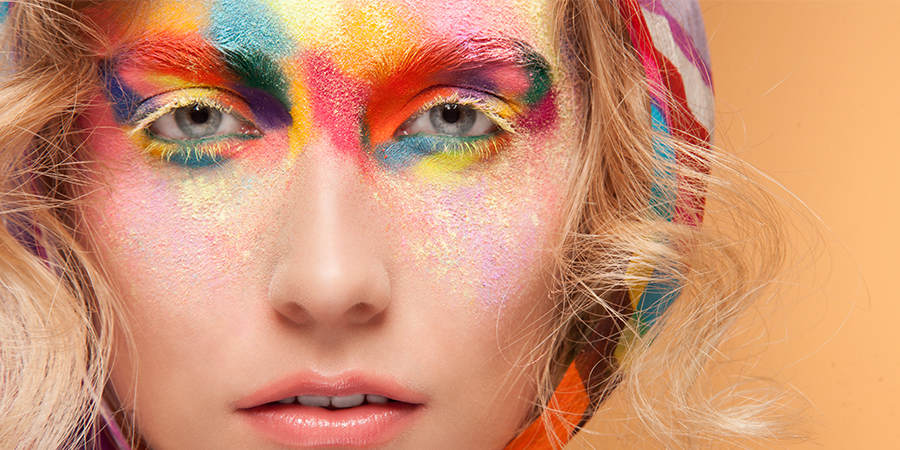
Specializations that Use Brow Blocking
Brow Blocking in Theatrical Makeup
One of the most common uses of brow blocking is in theatrical makeup. This technique has been used for centuries to create dramatic and exaggerated facial features on stage. By covering the natural eyebrows and drawing on new ones, makeup artists can completely transform a performer’s appearance.
In addition to creating more prominent or stylized brows, brow blocking can also be used to change the shape and positioning of the brows to suit a character’s personality or emotions better. It can also help create a more unified look when multiple performers are playing similar roles.
Interested in Theatrical Makeup? Check out our Master Makeup Artistry course sample.
Brow Blocking in Special Effects (SFX) Makeup
Brow blocking is also commonly used in special effects makeup, often in conjunction with prosthetics and other techniques to create realistic and extreme looks. By covering the natural eyebrows, makeup artists can create more space on the forehead for prosthetic pieces or use brow blocking as a base to sculpt and mold new eyebrow shapes with modeling wax or silicone.
In SFX makeup, brow blocking can be used to create various characters such as zombies, aliens, and monsters by completely altering the shape, size, and placement of the eyebrows. It is also an essential technique in creating bald caps since it allows for a seamless transition from the forehead to the cap.
Brow Blocking in Drag Makeup
Drag makeup is another popular use for brow blocking. In drag culture, exaggerated and over-the-top makeup is a key element in creating a bold and expressive persona. By blocking out the natural eyebrows, drag performers have a blank canvas to draw on their signature brows often including exaggerated arches, dramatic shapes, and bright colors.
Brow blocking can also be used with other makeup techniques such as contouring and highlighting to create more defined facial features. This allows for even more transformative looks that are essential in drag.
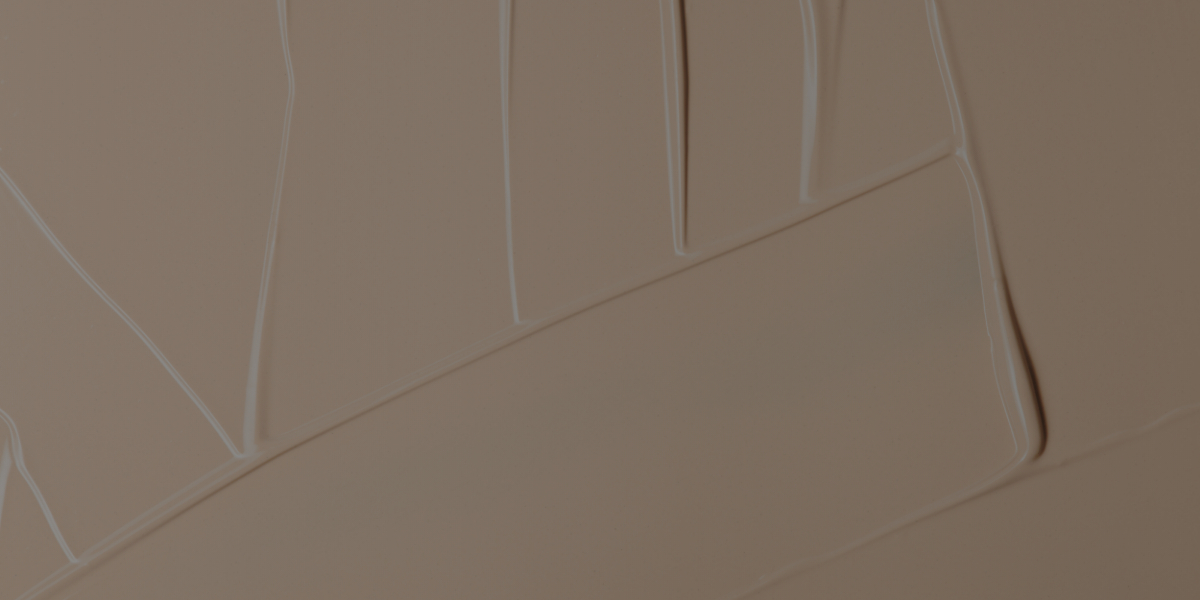
Absolutely amazIng! This is really cool and something I definitly need to try out next time I am doing something wicked! Rhanks for rhe tios and keep up the great content!
Hi Yesenia! We’re so glad you liked the content! We always love getting feedback here at QC 🙂